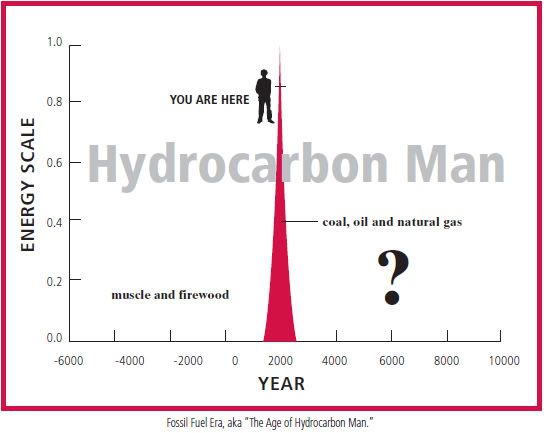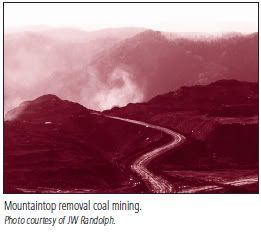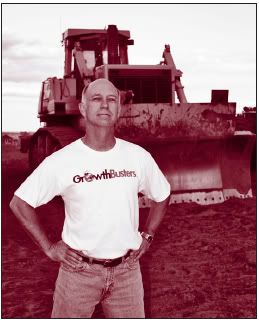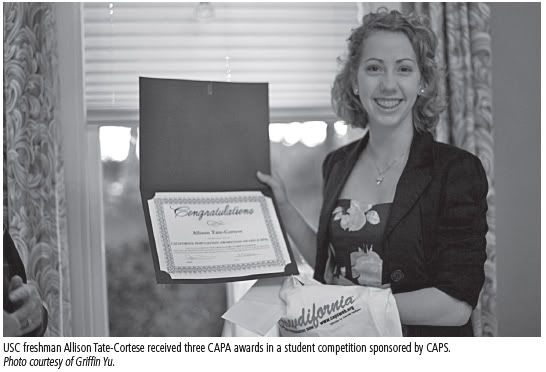Spring 2012 Newsletter
Published on April 26th, 2012
newsletter-spring2012-final.pdf
The Great Energy and Population Squeeze
By Leon Kolankiewicz, CAPS Senior Writing Fellow
You may have noticed that when you fill up your car tank with gasoline, after driving for a few days or a few hundred miles, sooner or later—but unavoidably—the needle on the fuel gage points to empty..
President's message: Our Right to Free Speech is at Serious Risk
We, who are for sound population and immigration policies and enforcement of immigration laws, are often dubbed by the media and radical groups as “anti-immigrant” and “racist.” First, these labels are flat out untrue and mean-spirited. But more important, by labeling those who support reasonable immigration policies and enforcing those policies with these slurs, the media feel justified in eliminating us from the discussion, thereby limiting our freedom of speech and ultimately cutting us off from media coverage. Why can’t the mainstream media present our positions on immigration in a fair and unbiased manner?
Citizen Safety Must Trump ‘Rights’ of Criminal Aliens
If only America were as firm in its immigration enforcement as Vietnam, then perhaps the United States could get rid of violent criminal aliens.
Review of GrowthBusters—One Man’s Crusade Against Population Growth
In “GrowthBusters: Hooked on Growth,” documentary filmmaker Dave Gardner talks about how he began his crusade against too much growth by calling out his hometown of Colorado Springs, Colorado, for its growth addiction.
E-Verify—an Important Program for Unemployed Americans
The number of working age U.S. men with only a high school education who are out of the labor force has quadrupled to 12 percent since 1968. Overall, U.S. unemployment is still high—8.3 percent—and likely higher if you believe, as many now do, that the official number, by virtue of how it is calculated, underreports the true situation.
California College Students Receive $11,000 in CAPA Awards Competition
Two California college students received cash awards totaling $11,000 in the first California Population Awareness Awards (CAPAs) competition that ran Sept. 2011 to Jan. 31, 2012 and was sponsored by CAPS.
SoCal’s Poor Air Quality Tied to Death, Cognitive Decline in Women
While it’s well known that air pollution contributes to a range of respiratory problems, two new studies provide more insight into other impacts of poor air quality.
 You may have noticed that when you fill up your car tank with gasoline, after driving for a few days or a few hundred miles, sooner or later—but unavoidably—the needle on the fuel gage points to empty.
You may have noticed that when you fill up your car tank with gasoline, after driving for a few days or a few hundred miles, sooner or later—but unavoidably—the needle on the fuel gage points to empty.
The fuel is used up, but not before the concentrated chemical potential energy it contains —125,000 BTUs in each and every gallon—is released during combustion as productive work and waste heat. The “productive work” is the force applied to a piston, which is transmitted to a crankshaft, and so forth. Ultimately your two-ton car is propelled forward towards its destination. This seemingly mundane, “well, duh!” observation —that the fuel is used up and not magically replenished on its own—corresponds to the vast and inescapable reality that as humans pump petroleum out of the geologic formations in which it formed or was trapped tens of millions of years ago, that petroleum too is not replenished.
Neither God, nor Hades, nor hidden geologic processes nor some dark lord of the underworld replace it on any time scale of value to humans. It is gone for good, used up; its energy content is irrevocably dissipated, and its long chains of carbon atoms in their covalent bonds converted into simpler carbon dioxide and water molecules. A “fossil fuel” is just that—nonrenewable.
This bracing geological reality is not very comforting, to put it mildly. But as Oxford University biologist Richard Dawkins has remarked in another context, “Reality doesn’t owe us comfort.” Supplying the massive energy demand of a nation of 313 million voracious American consumers would be no easy task even if our population were stable and nongrowing. After all, each year we consume prodigious quantities of gasoline, diesel, jet fuel, heating oil, kerosene, natural gas, coal and other hydrocarbons; all told, these fossil fuels supply about 85 percent of our total primary energy consumption. They are energy-dense, versatile and absolutely vital to our (unsustainable) way of life.
Even to maintain a constant level of fossil energy consumption at current high levels would be well nigh impossible over the long run, because high-quality, inexpensive and accessible (that is, conventional) stocks of fossil fuels are being inexorably depleted. These conventional fuels must then be replaced by lower-quality, costlier, less accessible, nonconventional and sometimes even dangerous fossil resources or by capital-intensive renewables (primarily wind and solar), most of which generate electricity, not the liquid fuels so crucial for transportation.
 This is why we hear more and more of disasters like the tragic Deepwater Horizon explosion and massive oil spill in the Gulf of Mexico, and of environmentally dubious energy sources such as shale gas, tar sands, oil shale and heavy oil. It is why destructive methods like mountaintop removal (denounced as “strip mining on steroids”) to reach deep coal seams and potentially harmful methods like hydraulic fracturing (also called “hydrofracking”) to obtain shale gas are becoming more and more commonplace, in spite of their grave risks and higher environmental and economic costs.
This is why we hear more and more of disasters like the tragic Deepwater Horizon explosion and massive oil spill in the Gulf of Mexico, and of environmentally dubious energy sources such as shale gas, tar sands, oil shale and heavy oil. It is why destructive methods like mountaintop removal (denounced as “strip mining on steroids”) to reach deep coal seams and potentially harmful methods like hydraulic fracturing (also called “hydrofracking”) to obtain shale gas are becoming more and more commonplace, in spite of their grave risks and higher environmental and economic costs.
We are not only scouring the very ends of the Earth for every last retrievable scrap of hydrocarbons, we are using ever-more powerful and energy-intensive technologies, equipment and methods to wring, wrest, cajole and squeeze tightly gripped fossil fuels from the very fabric of the planet’s crust.
It takes energy to extract or “recover” energy, as well as to process, refine or mill it, and as the quality or density of carbon-based energy resources declines—as the “low-hanging fruit” is inevitably used up—the ratio of energy output to energy input declines as well.
Energy analysts refer to this as a declining Energy Return on Energy Invested (EROEI). EROEI is a concept that every educated American should grasp, because it relates to how much net or surplus energy is actually left over from the energy production process to heat, cool and light our homes, offices and schools, and to run our vehicles and factories; in sum, to run our economy.
The EROEI of fossil fuels is in gradual, but terminal, decline. Without a doubt, a day is approaching when oil, gas and coal will supply no more than a small fraction of our energy needs at most, but not because they are all used up. That day will come when the EROEI drops to a certain threshold, below which it will no longer behoove us to drill, pump and blast to recover what remains underground.
As said, supplying the massive energy demand of a nation of 313 million voracious consumers in the face of declining EROEI would be a formidable and perhaps insurmountable task, even if our already enormous population were stable and not growing. This alone would be a predicament worthy of considerable concern and herculean effort.
Yet the dilemma we actually face is far more worrisome, because in recent years our national population has been growing by about 30 million energy consumers per decade. Just to keep per capita energy consumption constant means increasing energy and electricity production by more than 10 percent a decade. Yet over the long term, the energy resources that we have relied upon for the last century and a half to give us a standard of living that is, or was, the envy of the world, will become scarcer.
We are in a bind, squeezed between rising energy scarcity and costs on the one hand, and rising energy demand on the other. The rising demand is almost entirely due to population growth, because our per capita energy consumption has been flat for several decades.
While there is no panacea to rescue us painlessly from that bind, America should pursue two priorities that will at least point us in the right direction. First, we should conserve energy and use it much more efficiently—in our vehicles, homes and workplaces. Second, we should move to slow and then stop U.S. population growth (i.e., stabilize our population). To accomplish the latter, the birth rate needs to be reduced slightly, and immigration levels, both legal and illegal, have to be reduced substantially.
This is the medicine we need to self-administer. It’s imminently doable, if we put our minds to it. Cancer patients in chemo and radiation therapy must subject themselves to far greater trials and tribulations. And if we opt out or procrastinate too long, Nature will administer its own remedy for our excesses. That harsh reckoning we will surely want to avoid at all costs.
Return To Top | Back to Newsletters
 We, who are for sound population and immigration policies and enforcement of immigration laws, are often dubbed by the media and radical groups as “anti-immigrant” and “racist.” First, these labels are flat out untrue and mean-spirited. But more important, by labeling those who support reasonable immigration policies and enforcing those policies with these slurs, the media feel justified in eliminating us from the discussion, thereby limiting our freedom of speech and ultimately cutting us off from media coverage. Why can’t the mainstream media present our positions on immigration in a fair and unbiased manner?
We, who are for sound population and immigration policies and enforcement of immigration laws, are often dubbed by the media and radical groups as “anti-immigrant” and “racist.” First, these labels are flat out untrue and mean-spirited. But more important, by labeling those who support reasonable immigration policies and enforcing those policies with these slurs, the media feel justified in eliminating us from the discussion, thereby limiting our freedom of speech and ultimately cutting us off from media coverage. Why can’t the mainstream media present our positions on immigration in a fair and unbiased manner?
At CAPS our motto has always been, “It’s not about who, but how many.“ We advocate for keeping population numbers down to protect the U.S. in so many ways. This is not a liberal or conservative issue. It is an American issue. Sixty percent of Americans, according to recent polls, have stated they want to curb immigration, control our borders, and enforce the laws we already have. They and we support interior enforcement through a mandatory E-Verify law. By controlling immigration, and thus reducing overpopulation, we can help save our fragile environment, save endangered species, save our overcrowded, dysfunctional schools, and help cut enormous governmental costs for services for people who should not even be here. We want the U.S. to return to being sustainable, as we once were, without so many people.
Our voices are being routinely suppressed by Chambers of Commerce and big business concerns who want cheap labor and business as usual, by religious groups who want more members, and by both major political parties who want more voters.
American citizenship is the most valuable asset anyone on Planet Earth could have. We who are citizens should treasure it and not take it for granted. Those abroad envy us and, if given a visa or an easy way to cross our borders, billions would come here tomorrow. As compassionate as Americans are, do we really want to take on the world? It is surely not racist to want to protect the U.S. from being overrun by all those who want to come here.
There were members of the Clinton, then Bush, and now Obama administrations who have proposed open borders between Canada, the U.S. and Mexico. This eventuality would cause havoc amongst our citizens. There have been secret talks between the three nations to form a “North American Union.” Why hasn’t this been widely publicized?
Our right to free speech is at serious risk: much of the media and big business routinely control what we are allowed to hear and read and what we are not allowed to hear and read. In addition, our government is taking actions that the American public should have a say in, but do not. A discussion of immigration reform, in all its forms, should be an open forum with each voice respecting the views of others.
Isn’t it at least logically possible that someone can favor reductions in immigration to the U.S. without being a racist? An automatic charge of racism is not warranted if one has a sincere concern that our nation might lack sufficient room and resources to support the 420 million Americans projected for 2050. Our nation needs to openly examine immigration through a new population policy.
Denying freedom of speech by attacking others with nasty names is not what our nation is all about. We are in a dangerous period of American history.

Marilyn B.C. DeYoung, Chairman of the Board
Return To Top | Back to Newsletters
Citizen Safety Must Trump ‘Rights’ of Criminal Aliens
By Joe Guzzardi, CAPS Senior Writing Fellow
 If only America were as firm in its immigration enforcement as Vietnam, then perhaps the United States could get rid of violent criminal aliens.
If only America were as firm in its immigration enforcement as Vietnam, then perhaps the United States could get rid of violent criminal aliens.
Recently, Vietnamese national Binh Thai Luc, accused of killing five San Francisco residents including a 60-year-old married couple, their two adult children and a young woman, became the latest in a long list of criminal aliens the United States could not deport because the immigrant’s home country would not take him back.
Records show that in 2006 the Immigration and Customs Enforcement agency contacted Luc, 35, while he was serving an eight-year San Quentin prison sentence for robbery and assault with a deadly weapon. But since Vietnam refused to process his repatriation papers, Luc, pursuant to a 2001 Supreme Court decision, was released. The Supreme Court ruled that a deportee could not be detained pending deportation longer than six months. In 2005, the Court expanded its original ruling to include illegal aliens.
Consequently, an at-large Luc brutally bludgeoned five people. Now the finger pointing has begun.
San Francisco’s mayor, Ed Lee, said Luc shouldn’t have been allowed back in the Bay Area after his prison release. But Lee shifted the responsibility to “immigration authorities” to identify where convicted felons should be sent. Luc’s case apparently has caused Lee to have a change of heart. Last year, Lee spoke out strongly in favor of maintaining San Francisco’s sanctuary city policy which offers illegal aliens’ safe haven.
The Vietnamese Embassy in Washington, D.C., issued a statement that it didn’t know why Vietnam refused Luc. Spokesman Hung Tran said that Hanoi law enforcement determines who is acceptable and added that “generally” Vietnam takes back any person who has completed his United States prison term.
The American Civil Liberties Union claims that it’s illegal to further detain someone after he’s served his sentence. Julia Harumi Mass, an ACLU staff lawyer, said that trying to foresee who might commit crimes and locking them up in deportation proceedings in anticipation of uncommitted crimes “is unconstitutional.”
Arguments in defense of keeping hardened criminal aliens in the United States are indefensible. If Vietnam doesn’t want Luc back, that’s too bad. Luc could be escorted in a military plane and left at the airport for Vietnamese authorities. During the Eisenhower administration, when INS agents discovered Mexican illegal immigrants, they were transported to the Guatemalan border to be as far away from the U.S. as geographically possible but still within their own country. The argument that future crimes cannot be predicted is nonsense. The justice system has developed reliable offender risk assessment tools which it uses daily to help identify ongoing threats to society.
Last year, House Judiciary Committee Chairman Lamar Smith introduced the Keep Our Communities Safe Act that would override the Supreme Court decision. The bill passed committee. Had it become law, at least eight lives would have been saved. During the last two years about 8,000 immigrants with deportation orders have been released because their home countries refused to take them back. The Department of Justice stated that those immigrants include rapists, murderers and child molesters.
America’s immigration laws should protect, not endanger, its citizens. No non-citizen convicted criminal should be set free. Just because a criminal alien might not be deportable to his home country does not mean he should be released into the general population. Criminal immigrants should be detained until such a time as they can be deported either with or without the cooperation of their home countries.
Return To Top | Back to Newsletters
Review of GrowthBusters—One Man’s Crusade Against Population Growth
“I think sustainability is a bicycle with two wheels – No. 1 would be stabilizing population and second is reducing consumption.” – Dick Lamm, former governor of Colorado, CAPS Advisory Board Member
“If you manage, somehow, to half each person’s consumption, on average, but you allow population size to double, you haven’t gained at all, because, if you have half as much consumption per person, but twice as many persons, you’re right where you started.”– Paul Ehrlich, Stanford University
In “GrowthBusters: Hooked on Growth,” documentary filmmaker Dave Gardner talks about how he began his crusade against too much growth by calling out his hometown of Colorado Springs, Colorado, for its growth addiction.
Nestled against the Rocky Mountains, Colorado Springs changed from a charming mountain town in the last half of the 20th century, Gardner tells us, into a congestion zone covered by concrete and asphalt, with fast food restaurants and spreading housing developments.
Gardner pleads with his fellow townsfolk and city council to consider what real progress is and to look at developing a sustainable and ecologically responsible prosperity strategy, stating, “I’m against economic development strategies that encourage, accelerate and rely on population expansion.” Gardner’s efforts in Colorado Springs tended to fall in the category of “major uphill battle,” but some of his fellow citizens definitely “got it.” Among the man-in-the-field comments in “GrowthBusters” were:
All these people! What are we going to do with them?
Too much development; we don’t have enough water.
It’s all boiling down to too many people.
As Gardner continued his crusade, he found that his community wasn’t unlike many other towns and cities across the country, as well as nations around the world, that promote growth with such incentives as tax deductions, child credits and welfare payments to have more children.
Growth, in most every aspect of our lives, is deeply embedded in our cultural programming, he realized, with economic growth being the “holy grail.”
“We’ve got a situation in which we’re seeing the growth in human technological capacity and human populations and the scale of the economy that’s completely unprecedented,” explains William Rees, professor and population ecologist at the University of British Columbia, in the film.
ecologist at the University of British Columbia, in the film.
Adds Dick Lamm, former governor of Colorado and co-director of the Institute for Public Policy Studies in Denver, Colorado, “Humankind has itself become a geologic force; it’s changing our climate; it’s heating up our world; it’s making our water tables lower; our fisheries are dying.”
Gardner’s look at our culture of growth leads him to explore the historical path of growth. Our use of fossil fuels for energy spurred population growth in just the last 100+ years from around 2 billion in the early 1900s to more than 7 billion today.
Through excellent visuals and numerous respected sources Gardner addresses such ideas as steady growth, uneconomic growth, biocapacity, carrying capacity, “growth pushers,” ecological footprint, liquidation of our resources through growth, the consumer-driven society and media perpetuation of growth.
This documentary is a “must see” for anyone concerned about sustainability and a future for mankind. Find a screening or order a copy of “Growth- Busters” at: growthbusters.org.
Return To Top | Back to Newsletters
E-Verify—an Important Program for Unemployed Americans
The number of working age U.S. men with only a high school education who are out of the labor force has quadrupled to 12 percent since 1968. Overall, U.S. unemployment is still high—8.3 percent—and likely higher if you believe, as many now do, that the official number, by virtue of how it is calculated, underreports the true situation.
Hardest hit are low-skilled Americans and teens. Of an estimated 23 million Americans out of work, the vast majority—some 19 million— don’t have a college degree. While outsourcing of lower-end jobs to other countries has contributed to the situation, another factor is that these workers now often compete with illegal aliens for work. An estimated 7 million illegal workers are in the U.S. in low-skilled work.
The effect of these illegal workers is to overall lower wages and take jobs that Americans could hold. Ensuring a legal workforce is one way to help get Americans back to work, and the E-Verify program helps do this. A program of the U.S. Citizenship and Immigration Service and the Department of Homeland Security, in partnership with the Social Security Administration, E-Verify provides electronic verification of employment eligibility for new hires to employers who participate in the no-cost program.
Thus far, some 320,000 employers are using the program, and about 3,000 businesses subscribe to the program each week. Americans support EVerify too, with a recent poll indicating 82 percent believe employers should be required to use it.
Return To Top | Back to Newsletters
California College Students Receive $11,000 in CAPA Awards Competition
 Two California college students received cash awards totaling $11,000 in the first California Population Awareness Awards (CAPAs) competition that ran Sept. 2011 to Jan. 31, 2012 and was sponsored by CAPS.
Two California college students received cash awards totaling $11,000 in the first California Population Awareness Awards (CAPAs) competition that ran Sept. 2011 to Jan. 31, 2012 and was sponsored by CAPS.
The CAPA Awards were created to increase awareness among California college students of the state’s rapid population growth and to encourage them to explore the sources and implications of continuing growth, and the benefits that a sustainable population would bring.
Allison Tate-Cortese, a film and television student at the University of Southern California, Los Angeles, was awarded $9,500 for her entries in the video, audio and Facebook categories in the CAPAs competition.
“Being honored and recognized for projects that I put thought, time and effort into is the most fulfilling thing for a media maker, and I am so grateful to CAPS for creating this contest and opportunity for students,” said Tate-Cortese, a native of Orlando, Florida.
Tate-Cortese’s entries were titled California’s “‘POP’-ulation.” Through simple and clear illustrative messaging—an expanding balloon that ultimately pops if air continues being added beyond capacity—the entries effectively conveyed the limits to population growth.
“Allison gets it. And I’m not just talking about her grasp of the facts associated with unsustainable population growth,” said Brantley Davis, awards judge and executive vice president of the Washington, D.C.-based Davis & Company, of Tate-Cortese’s work. “She also gets it from an ad perspective. Her campaign was wrapped around a real concept, and she carried the concept over into various creative elements, forming a cohesive campaign. This is what I would expect from a USC film student.”
The $1,500 award in the editorial category went to Robert Neumann, a student at Foothill College in Los Altos Hills, whose hometown is Palo Alto, California. Neumann’s op-ed, titled, “California’s Overpopulation Crisis: The Only Wrong Thing to Do is Nothing,” outlined how, if overpopulation is not addressed, “the consequences of inaction are far greater than those of most issues we face today.”
Nick Gailey, a student at Irvine Valley College; and Sarah Ruffner from College of the Canyons, Valencia, also were winners in the CAPAs competition. Each won an iPad 2.
Contest judges for the CAPA Awards were Keith Cizowski, corporate communications manager for Nissan North America; Robert W. Gillespie, president of Population Communication; and Maggie Mixsell, acting teacher at Santa Barbara Community College and the University of California, Santa Barbara.
Also serving as judges were TV and video producer Adam Ross of Santa Barbara’s Black Diamond Productions and renowned author, ecologist and filmmaker Dr. Michael Tobias, president of Dancing Star Foundation and advisory board member for CAPS. See the winning submissions at: CAPSweb.org or CAPAawards.com.
Return To Top | Back to Newsletters
SoCal’s Poor Air Quality Tied to Death, Cognitive Decline in Women
 While it’s well known that air pollution contributes to a range of respiratory problems, two new studies provide more insight into other impacts of poor air quality.
While it’s well known that air pollution contributes to a range of respiratory problems, two new studies provide more insight into other impacts of poor air quality.
Air pollution hastens cognitive decline in women, according to a study conducted by researchers in four cities that was published in the “Archives of Internal Medicine.”
The study lead, Jennifer Weuve from Rush University Medical Center in Chicago, says the research, which looked at 20,000 women, shows a link between air pollution and cardiovascular disease. “It turns out that cardiovascular disease may play a role in cognitive decline,” says Weuve. “So if we understand how to prevent or delay these cognitive increments, maybe we can prevent or delay dementia.”
Alzheimer’s disease and other dementias have become more prevalent and, absent effective drugs for treatment, are considered the health crisis of the century, according to Harry Johns, president and CEO of the Alzheimer’s Association.
Individual choices on diet, smoking and weight may be related to dementia, but Weuve notes that air pollution is something that can be addressed from a societal level. “It’s a whole new way to think about prevention for dementia and cognitive decline.”
The second study, printed in “Risk Analysis,” the journal of the Society of Risk Analysis, indicates that, in the U.S., Southern Californians are at greatest risk of death from air pollution.
A spokesman for California’s South Coast Air Quality Management District (AQMD) says, “The bottom line is that in Southern California we have some of the highest levels of particulate matter in the country, and we are working as quickly as possible at reducing those levels.”
With a population that has doubled in just about 40 years, there are more vehicles on the road now in California putting more particulates in the air, just to provide one example. So even given advances to build less-polluting vehicles, with relentless population growth—California is projected to add potentially another 20 million people by 2050—the AQMD will have to run faster just to stay in place.
Return To Top | Back to Newsletters







